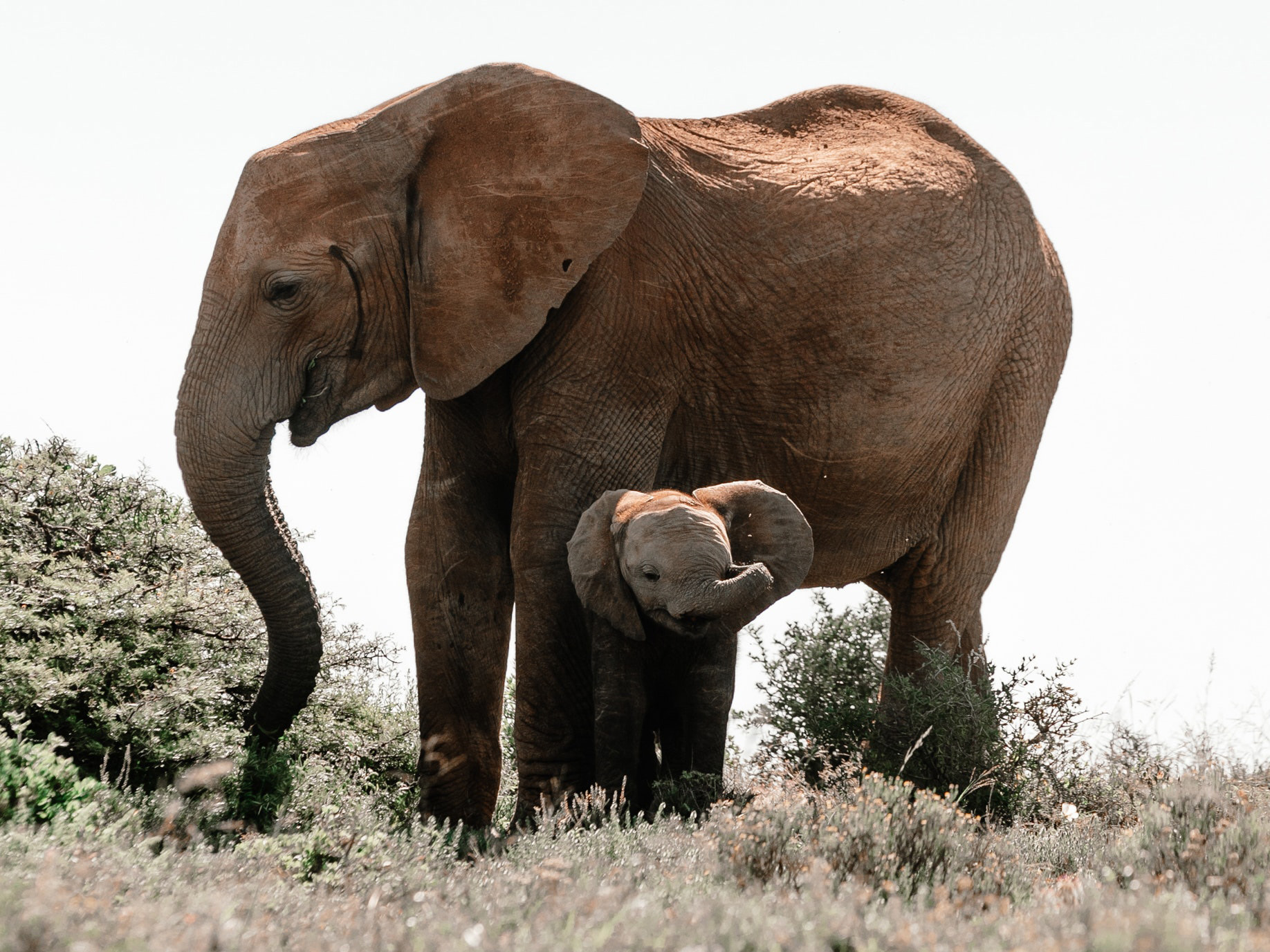
In 2002, 63 mutilated rhino carcasses were found splayed across South Africa’s Pilanesberg Park. With gaping gashes scored from the shoulders to the back, park rangers hurried to find the violent perpetrators. The injuries were suspected to be caused by elephant tusks, as clashes between elephants and rhinos aren’t unheard of, but slaughters in this quantity were abnormal. And indeed, the culprit was a group of adolescent male elephants who embarked on a murderous rampage, brutally tusking the endangered rare rhinos that the park spent years protecting.
The vagaries of the young elephants were caused by their isolation from elders. Elephants have a complex social structure, distinguished by their close family ties and intense mother-offspring bond. At the core of elephant society are mothers with their calves, alongside sisters, aunts, grandmothers — caregivers whose relationships last a lifetime. The clan is led by a matriarch, the bedrock of elephant society, who is a well-respected repository of social and ecological knowledge. Until calves leave the herd around 15-years-old, elephants depend on their mothers and constellations of allomothers for social and emotional support. In adolescence, male elephants gradually transition out of their natal family and join an older all-male group.
Culls and poaching have fragmented elephants’ crucial social structure, depriving them of maternal bonds and familial support. This particular situation was incited 20 years ago, when one of South Africa’s parks culled the adult elephants to contract the overpopulation, orphaning the elephant calves and transporting them to another park. These actions created a generation of traumatized calves with no elders to teach them social interactions or pass their wisdom and expertise. Dropped from the intricate web of tight-knit elephant kinship, the baby elephants were left to fend on their own, with no mother figures to instill their social roles and no bulls to de-escalate their hyper aggression. As a result, the three elephants that killed rhinos in Pilanesberg Park bonded over their mutual sorrow and wreaked vengeance. In retaliation, to stop the rhino killings, the park rangers hunted down and shot the gang of adolescent elephants, nicknamed juvenile delinquents.
Human hubris has decimated animal populations via poaching, culling and habitat eradication. This has further assisted the disintegration of the natural social structure. This generational genocide has inflicted a scar of trauma, pain and grief, a life that began with and ended in bloodshed. Humans depriving teen elephants of their intricate social hierarchies resulted in their bellicose behavior, signaling the precipitous collapse of elephant culture. Since the mid-’90s, the percentage of male elephant deaths perpetrated by other male elephants has shot up from 6% in stable elephant communities, to 90% in South Africa’s parks. This virulent trend of elephant on elephant violence is now diagnosed as a chronic stress, a species-wide trauma.
In a study simulating social threats, the undisturbed elephant herd banded together while the culling survivors were unable to coordinate a defensive formation in response to a threat. Human disturbances have driven aberrant behaviors among animals following extreme trauma, impeding their communication and cognitive aptitudes in the wild.
Childhood trauma has lasting psychophysiological effects on the brain and behavior. Deprived of the intimacies of multi-generational herd life and with violence embedded into their earliest memories, elephants have displayed depressive, erratic and violent behavior parallel to human PTSD. Current conservation programs fail to preserve elephant social systems. Conservations should consider the effects of psycho-biological trauma and promote preserving social systems by ensuring the presence of older herd members. All mammals share a ubiquitous dependency on developmental sociality.
Our knowledge of the effects of human PTSD can instruct how violence permanently disrupts elephant culture, provoking a cycle of violence and behavioral dysfunction. Anthropogenic effects are more pervasive than dwindling demography; it’s actually altering elephants’ natural social structure and their ability to socialize and reproduce. Neuroscience can map the snapped synaptic bridges from abuse and neglect, ecology can show the population near extinction from systematic culling and crime statistics harbor a new statistical category to document elephant attacks as it has become so commonplace.
Conservation efforts should instill this cross-disciplinary knowledge and focus on expanding elephant territory to its historical breadth/scope and eliminating culling and translocation as conservation tools. Equipped with this knowledge, preserving their natural structure is the least we can do to aid their survival. We must reject our anthropocentric views to engage in the truest sense of interspecies empathy, cohabitating with wild animals like humans always have.







